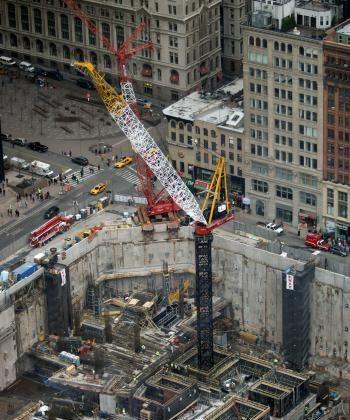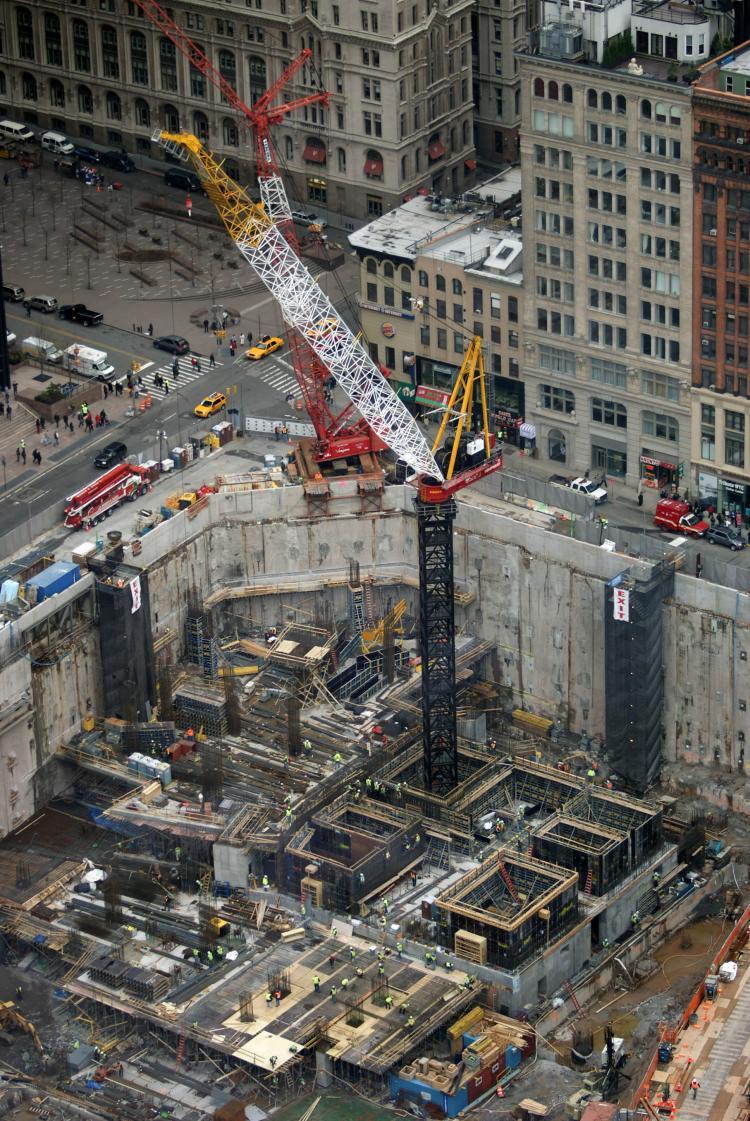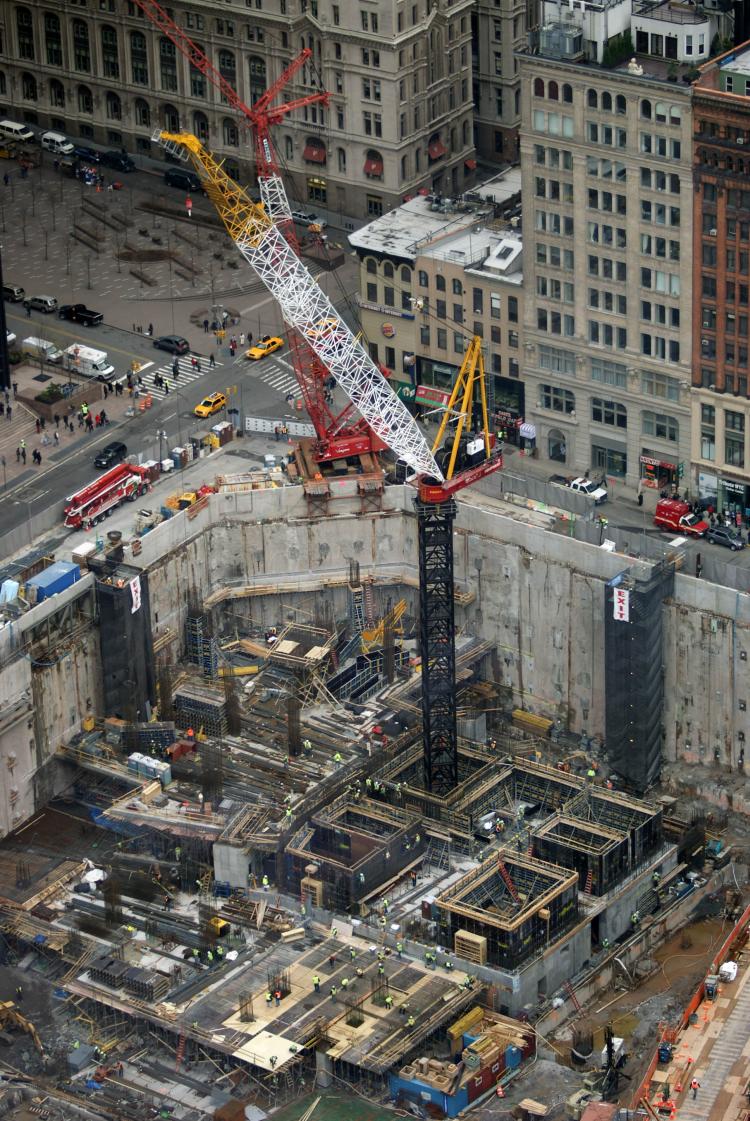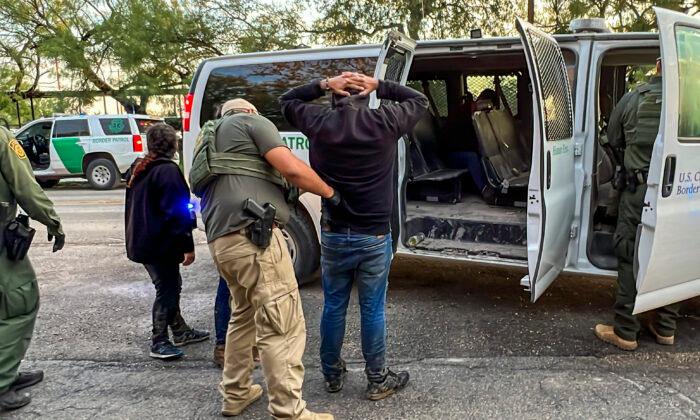NEW YORK—Retaining Manhattan as the epicenter of the world is the work of many minds. How to plan, and build the heart of a major city into the future is a balancing act requiring careful consideration of residential space, commercial and office space, cultural elements, transport, and amenities.
President of Alliance for Downtown New York, Elizabeth Berger, is adamant that Lower Manhattan not only has a future, “but could lead the future.”
“We have to keep this going,” said Berger, who states completing the World Trade Center (WTC) is top priority. “This is the single largest stimulus project in New York City. We need this project.”
The redevelopment of the WTC site will provide the office space needed to remain the business capital of the world when the economy recovers, she said, speaking at a forum recently organized by the Stephen L. Newman Real Estate Institute’s Downtown Futures Group.
The Downtown Futures Group authored the report Downtown 2020—a comprehensive look into the future of Manhattan. Downtown 2020 was prepared by a team that includes representatives from Baruch College, New York University, and private companies including Real Capital Analytics, Grubb & Ellis, and Sam Schwartz Engineering.
President and CEO of Silverstein Properties, Larry Silverstein, said his company will build three towers along the eastern side of the 16-acre World Trade Center site. Silverstein Properties acquired the WTC site in July 2001, six weeks before the September 11 attacks.
Currently, the company has $10 billion worth of development activities underway, including rebuilding the commercial office space at the WTC, one of the largest public-private developments ever undertaken.
“It’s important not to get deflected by what’s happening today,” Silverstein said. WTC1 (formerly known as the Freedom Tower), is now 135 feet above ground and is scheduled to be completed sometime around 2012.
Another cleared site that is ready to go will have a Four Seasons Hotel with a 912-foot residential tower on top. The project will begin once the institutions come together and the banks start to lend again, he said.
“At the moment are they lending? No. Today? No. Tomorrow? Watch. Tomorrow they will start to lend again,” Silverstein added. “We’re beginning to see the first signs of freeing up.” Office space in the area will underpin the business for the future, he said.
The Importance of Transit
Connecting Manhattan locally, regionally, and globally through improved transport systems and reducing congestion were other key topics discussed at the forum in WTC Tower 7.
With the expected population growth of a million more people over the next 25 years, the Fulton Transit Center is considered a crucial project to reduce congestion.
“If you think it’s bad now, just wait,” said Joel P. Ettinger, Executive Director of the New York Metropolitan Transportation Council. “This may be referred to as the good old days.”
The Fulton Street Transit Center will incorporate six existing Lower Manhattan subway stations and is located in the general vicinity of Fulton Street and Broadway. The Center will impact hundreds of thousands of daily commuters and Lower Manhattan residents, and visitors between 12 subway lines. Construction is currently underway.
Berger said the Transit Center is the second priority following the WTC, and thinks it should have more capacity, and better connections and passenger amenities.
According to Berger, 203 firms have moved operations to Downtown Manhattan since 2005, and between 2005 and 2008, employment increased by 26 percent. The residential population downtown has doubled since 9/11, and tourism has almost doubled since 2003.
“We have to keep building and diversifying. We have to be ready for the next wave of investment and prosperity,” Berger said.
Professor Robert W. Burchell, from Rutgers University, stressed transport as an investment in unlocking Manhattan.
“We can’t lose train services. We can’t raise fares,” Burchell said. Improving access on the west side and decongesting downtown were important, and the stimulus “must mean doing existing projects.”
Burchell says Manhattan as the “jewel” of sophisticated cities, outweighing London, Berlin, and Hong Kong—the main competition for top global city. “This is the address of choice.”
However, Burchell said the projection of job losses through to 2010 is 200,000-270,000 and this, combined with a lack of credit and constrained Wall Street bonuses, will significantly affect real estate.
The report also recommends that New York City and Downtown continue to become more residential, including affordable housing.
Director of the Stephen L. Newman Real Estate Institute, Jack S. Nyman, said although the Downtown 2020 “was conceived in a very different market, just before the market went south, the current conditions make our recommendations even more pertinent.”
A sequel to Downtown 2020 called Going Long was published in response to the financial collapse, but retains the main principles the original report focused on—adjusted for a slower completion time.
Other Downtown panel members included Lance Jay Brown and Robert Paaswell, of Baruch College, Peter Salins of Stony Brook University, and Rosemary Scanlon of NYU Real Estate Institute. Other guest speakers included Avi Schick, chairman of the Lower Manhattan Development Corporation, and Seth Meyer from the office of the deputy mayor.







